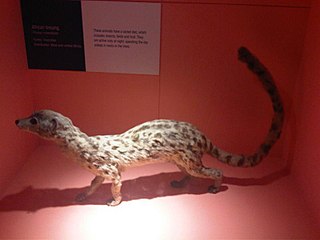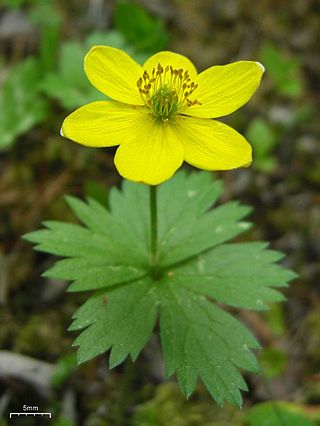
Sir John Richardson FRS FRSE was a Scottish naval surgeon, naturalist and Arctic explorer.

Ornamental grasses are grasses grown as ornamental plants. Ornamental grasses are popular in many colder hardiness zones for their resilience to cold temperatures and aesthetic value throughout fall and winter seasons.

Festuca (fescue) is a genus of flowering plants belonging to the grass family Poaceae. They are evergreen or herbaceous perennial tufted grasses with a height range of 10–200 cm (4–79 in) and a cosmopolitan distribution, occurring on every continent except Antarctica. The genus is closely related to ryegrass (Lolium), and recent evidence from phylogenetic studies using DNA sequencing of plant mitochondrial DNA shows that the genus lacks monophyly. As a result, plant taxonomists have moved several species, including the forage grasses tall fescue and meadow fescue, from the genus Festuca into the genus Lolium, or alternatively into the segregate genus Schedonorus.
There are over 190 vascular plant species on the Norwegian Arctic archipelago of Svalbard. This figure does not include algae, mosses, and lichens, which are non-vascular plants. For an island so far north, this number of species constitutes an astonishing variety of plant life. Because of the harsh climate and the short growing season, all the plants are slow growing. They seldom grow higher than 10 cm (4 in)

Festuca ovina, sheep's fescue or sheep fescue, is a species of grass. It is sometimes confused with hard fescue.

Festuca altaica, also known as the altai fescue, or the northern rough fescue, is a perennial bunchgrass with a wide native distribution in the Arctic, from central Asia to eastern North America. It was first described in 1829 by Carl Bernhard von Trinius. It is under the synonym F. scabrella, the rough fescue.

The Central African oyan, also called Central African linsang, is a linsang species native to Central Africa.

Festuca rubra is a species of grass known by the common name red fescue, creeping red fescue or the rush-leaf fescue. It is widespread across much of the Northern Hemisphere and can tolerate many habitats and climates. It is best adapted to well-drained soils in cool, temperate climates; it prefers shadier areas and is often planted for its shade tolerance. Wild animals browse it, but it has not been important for domestic forage due to low productivity and palatability. It is also an ornamental plant for gardens.

Boykinia is a small genus of plants related to the saxifrages. It contains at least nine species, known as brookfoams. Brookfoams are glandular rhizomatous creeping perennials with highly lobed or toothed leaves and inflorescences of petite flowers. They are native to North America and Asia (Japan).

Anemonastrum richardsonii, commonly known as yellow thimbleweed, is named after a Scottish naturalist, Sir John Richardson (1787–1865) who found it on Franklin's expedition to the Arctic. It is a perennial, deciduous plant that blooms in mid to early June.
Achnatherum richardsonii is a species of grass known by the common names Richardson's needlegrass, spreading needlegrass, and Canada mountain-ricegrass. It is native to northwestern North America, where it is distributed from Alaska and Yukon through the western Canadian provinces south to Colorado.

Salix richardsonii is a species of flowering plant in the Salicaceae, or willow family. It is known by the common names Richardson's willow and woolly willow. It is native to Russia and northern North America, where it occurs in Alaska and northern Canada. Some authorities consider it to be a subspecies, Salix lanata subsp. richardsonii(Hook.) A. K. Skvortsov rather than a species itself.
Physaria fremontii is a species of flowering plant in the family Brassicaceae known by the common name Fremont's bladderpod. It is endemic to Wyoming in the United States, where it occurs only in and around the Wind River Range in Fremont County.

Hymenoxys richardsonii, the pingue hymenoxys or pingue rubberweed, is a North American species of plants in the sunflower family. It is widespread across the western United States and western Canada from Arizona, New Mexico, and western Texas north as far as Alberta and Saskatchewan.

The American ermine or American stoat is a species of mustelid native to most of North America. The specific epithet refers to Arctic explorer and naturalist John Richardson.
Festuca gracillima is a species of grass in the family Poaceae. This species is native to southern Argentina, and southern Chile. It is perennial and prefers temperate biomes. Festuca gracillima was first described in 1847.

Festuca purpurascens is a species of grass in the family Poaceae. It is native to Chile and Argentina. It is either perennial or a rhizomatous geophyte. It prefers to grow in temperate biomes. It was first described in 1847.












